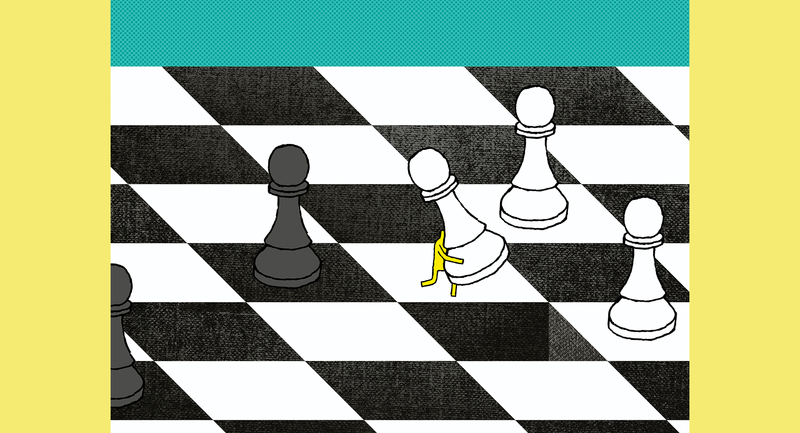I recently observed a student-driven discussion focused on global warming. Students, inspired by teenage activist Greta Thunberg, generated, sorted, and prioritized their questions with teacher support and, over several days, engaged in a rich discussion to learn together. The portion I observed centered on understanding the severity of the problem. Students needed clarity so that they could eventually grapple with and discuss their biggest question, "How can we take action that will make a difference?" Students were motivated from the start by genuine interest and concern.
In this classroom, the teacher has learned how to group students and use protocols that allow every student to engage. She focuses her attention on thoughtful participation and ownership. In my work with teachers, I've noticed that getting students to push beyond basic participation into meaningful engagement is the hardest part of discussion-based learning. To meet this need, I help teachers apply three moves to help students engage intellectually and take responsibility for the depth and quality of their discussions.
Move 1: Teach students how to question and respond.
Teaching students to generate questions for thinking and discussion is an important first step for engagement and high-quality discourse. Starting with a simple taxonomy, such as divergent and convergent questions (see Figure 1; also called "thick and thin" or "1 dollar and 100 dollar" questions), can be an effective way to teach students that not all questions are created equal. When students are 1) taught the difference between convergent and divergent questions, 2) provided with examples and teacher modeling, and 3) given a bit of time to practice generating them with others, students can quite competently generate great questions for discussion.
Three Moves to Elevate Student Discussion-table
DIVERGENT QUESTIONS | CONVERGENT QUESTIONS |
|---|
| Allow for a number of different or alternative correct responses. Often ask for opinions or conjectures with justification. May require application, analysis, evaluation. What qualities are most important in a friend? What is the best approach to solving the problem of bullying on social media? How do economics affect the decisions we make about environmental policy? What is the best way to represent this linear relationship? | Call for one correct response. Can be factual and simple or factual and complex. Usually require remembering, explaining, comparing, or contrasting. What is a fraction? What type of community do we live in? What support does the author provide for the opinion he gives in the opening paragraph? What are carbon emissions? |
Figure 1: Convergent divergent questions with examples.
Students who understand that not all questions are the same are better positioned to respond thoughtfully. For example, students can think together about how to respond to a question that asks for a comparison versus a question that asks for a supported opinion. As students come to understand that there are different types of questions, they can work with their peers (also through discussion) to examine the questions they have, sort them into sub-categories based on type, decide which questions are prerequisite to others, think about which ones will benefit from research, or determine which require different perspectives. When students select questions for discussion, they can practice listening to deepen understanding, responding thoughtfully, using text (if appropriate), and perhaps generating questions within the discussion that clarify and extend their thinking.
Move 2: Have students carefully describe high-quality discussion, especially the thinking you expect to see.
Another step to elevating discussion is describing what thoughtful discussion looks like with students. Place students into small groups and ask them to discuss and jot responses to these questions:
After they jot together, have them sort and cluster to create categories. Often, first responses to these questions address preparation, participation, listening skills, and respect. For example, high school students generated this clustered list:
Preparation:
We have done the required reading.
We have organized notes, annotated text, or sticky notes.
We put away distractions (phones, devices, papers).
Collaboration:
We allow one person to speak at a time.
We all contribute to the discussion; no one dominates.
We invite quiet members into the discussion when necessary.
We help others to express their ideas, if they are struggling.
Quality of Discussion:
We stay focused (on topic or the text) and steer back to the focus when necessary.
We build on others' ideas.
We specifically cite textual evidence (when we have a text).
We agree and disagree respectfully.
Although these are good responses, they don't get at the thinking (or thoughtfulness) that would make a high-quality discussion. What would we hear in a discussion that includes deep thinking? In order to evoke these criteria from students, they need to see and hear examples of good thinking. By showing two or three video clips of high-quality discussion, teachers can help them to see that thinking is evidenced by connection making, analysis, probing questions, clarifications, uncovering assumptions, identifying bias, weighing evidence, or considering alternatives. When asked, "What would we hear in a discussion that includes deep thinking?" and shown videos of high-quality discussions, those same students generated these additional criteria:
We ask questions to clarify, clear up confusion, or probe.
We try to understand a peer's perspective (by stepping into a different role or mindset).
We try to uncover our own bias.
We think about and weigh evidence.
Although their additions were not exhaustive, this step was an effective way to get students focused on the thinking they would need to do in discussion. Providing examples of the thinking skills expected during discussion is a way to further develop student understanding. Figure 2 identifies some skills that could provide a starting point.
Figure 2: Critical Thinking Skills
Evaluating sources and information:
Judge the validity or reliability of information sources.
Identify credible, relevant sources of information.
Distinguish relevant from irrelevant information.
Assessing problems, issues, arguments, theories, or accounts:
Examine or evaluate assumptions.
Analyze similarities and differences.
Use specific criteria to gather or judge the quality of evidence.
Explore implications and consequences.
Identify causes and effects.
Recognize contradictions.
Select and use facts to support claims or conclusions.
Identify counter-arguments.
Look for and refine generalizations.
Move 3: Ask students to reflect, self-monitor, and set goals.
Once students can name and recognize the qualities of a thoughtful discussion, they need opportunities to practice and monitor the quality of their discussions. For example, prior to beginning a new discussion, a teacher may focus students on a specific subset of criteria that they need to work on. Or, she may ask students to identify, individually or in small groups, which criteria they need to focus on in order to improve the quality of their participation and thinking in discussion. During discussions, she may ask them to pause, examine the criteria, and identify a skill that's going well or needs work. Coupling the criteria for thoughtful discussion with reflection prompts can further support students' ability to think metacognitively and move toward even better discussions. The adaptable prompts below can be tailored to fit specific grade levels and subject areas and can support the development of self-awareness and self-regulation skills. These can also be used to wrap-up a discussion or serve as a formative check or exit ticket at the end of a discussion.
Adaptable Reflection Questions Focused on Discussion
What did your group do well today?
What thinking skills challenged your group? Why do you think so?
What part of the discussion process was hard for you? What part was easy?
What goal can your group set for your next discussion?
What aspects of small group discussions are most difficult for you? Why?
How does sharing your thinking with others and hearing their thinking help you to understand?
What new questions did your group raise today?
What could your group have done differently to improve the discussion? Why do you think this?
Finally, the criteria for high-quality discussion that students help to generate are not only valuable for student reflection and monitoring, but they also serve to ground the descriptive feedback that the teacher provides. Imagine how the criteria can support feedback that affirms what students are doing well and helps them to see what they need to work on. The teacher who supported her students' discussion about global warming was able to tell her students this: "Nice work: you all participated and stayed focused. I saw you rely on personal experiences to make connections and I heard you asking more questions of each other and probing for clarification. While you keep working on these skills, we need to turn your attention to making connections across texts. We will continue to work on that next week." That feedback made sense to them because they had generated the very criteria that their teacher referenced.
The three moves described all require intentionality in planning and scaffolding thoughtful discussion. Most important, the moves require placing students at the center by using their questions, engaging them in identifying criteria, and asking them to self-monitor through the process. These student-centered practices create ownership and engagement, build confidence, and can lead students to develop the thinking skills that will serve them well beyond school.







